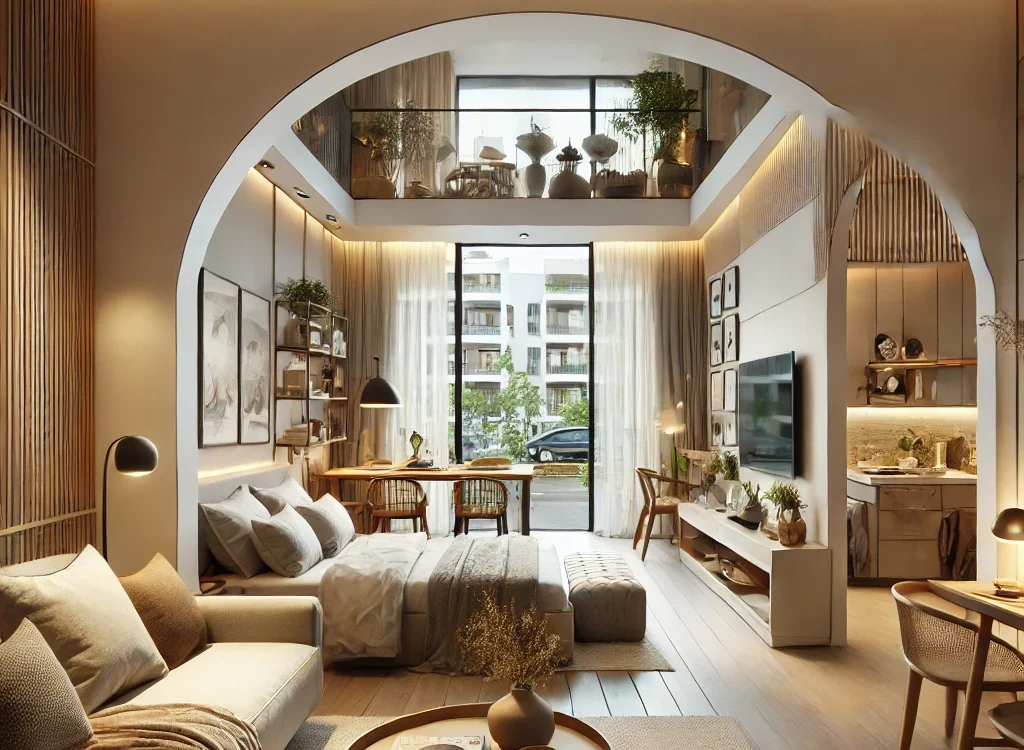Vastu Shastra, an ancient Indian science of architecture, offers guidelines to create a harmonious and balanced home interior. Rooted in Vedic traditions, Vastu principles aim to optimize the flow of energy within a living space, promoting health, prosperity, and well-being. Here are key Vastu guidelines for designing a harmonious home interior:
Creating a home that is both aesthetically pleasing and energetically balanced is essential for fostering well-being and prosperity. Vastu Shastra offers a wealth of guidelines to help you achieve this balance. Here are some practical tips based on Vastu principles for a harmonious home interior:
1. Entrance and Main Door
- Direction: Ideally, the entrance should face north, northeast, or east to attract positive energy.
- Design: The main door should be larger than other doors in the house, open inwards, and be free from obstructions.
- Lighting: Ensure the entrance is well-lit and welcoming.
2. Living Room
- Location: Best positioned in the north, northeast, or east.
- Furniture Arrangement: Place heavy furniture in the west or southwest. Keep the center of the room free to allow energy to flow.
- Colors: Use light and soothing colors like white, cream, or light shades of green and blue.
3. Kitchen
- Location: Southeast corner is ideal. Alternatively, the northwest is acceptable.
- Stove Placement: Place the stove in the southeast part of the kitchen, and the cook should face east while cooking.
- Colors: Opt for warm colors like yellow, orange, or red to enhance the fire element.
4. Bedrooms
- Master Bedroom: Should be located in the southwest.
- Bed Position: Headboard towards the south or west wall; avoid placing mirrors opposite the bed.
- Colors: Use calming colors like blue, green, or lavender for a restful environment.
5. Bathrooms and Toilets
- Location: Northwest or southeast corners are suitable.
- Ventilation: Ensure proper ventilation and cleanliness.
- Colors: Light colors like white, beige, or light blue are ideal.
6. Pooja Room (Prayer Room)
- Location: Northeast corner is the most auspicious.
- Idol Placement: Idols should face west, and the person praying should face east.
- Ambiance: Use soft lighting and fragrant incense.
7. Study Room
- Location: Best in the northeast, east, or north.
- Desk Position: The study table should face east or north.
- Colors: Soothing colors like green, blue, or white enhance concentration.
8. Colors and Décor
- General Guidance: Use colors according to the function and direction of each room.
- Earth Tones: Earthy tones and pastels are generally favorable. Avoid overly bright or dark colors.
- Natural Elements: Incorporate plants, water features, and ample natural light.
9. Declutter and Maintain Cleanliness
- Decluttering: Regularly remove unnecessary items to prevent energy blockages.
- Cleanliness: Maintain cleanliness in all areas to promote a positive and clear atmosphere.
10. Mirrors
- Placement: Avoid placing mirrors facing the main door or directly opposite the bed.
- Height: Place mirrors at an appropriate height to avoid cutting off reflections.
11. Lighting
- Natural Light: Maximize natural light, especially in the northeast.
- Artificial Lighting: Use soft, warm lighting in living spaces and bright lighting in workspaces.
12. Plants and Indoor Gardening
- Placement: Place plants in the east or northeast to enhance positivity.
- Types: Use indoor plants that promote good health, such as tulsi, bamboo, and money plants.
By following these Vastu guidelines, you can create a home that not only looks beautiful but also supports a balanced and harmonious lifestyle. Integrating these principles with your personal style and modern design can result in a living space that nurtures both your physical and mental well-being.
Facilitating Learning with a Well-Designed Study Room
Study rooms located in the northeast, east, or north can promote concentration and learning. Facing east or north while studying, using soothing colors, and ensuring good lighting can create an environment conducive to academic success.
Enhancing Overall Energy Flow with Thoughtful Décor and Colors
Using colors and décor that align with the function and direction of each room can significantly impact the home’s energy. Earthy tones and pastels generally favor a harmonious environment, while natural elements like plants and water features can enhance positive energy flow.
Regular Decluttering and Cleanliness
Maintaining a clutter-free and clean home is essential for the free flow of energy. Regular decluttering and ensuring cleanliness can prevent energy blockages, fostering a positive and clear atmosphere that benefits mental and physical health.
By thoughtfully integrating Vastu principles into your home design, you can create a living space that not only aligns with ancient wisdom but also meets modern lifestyle needs. The harmonious blend of aesthetics and energy optimization can transform your home into a sanctuary of peace, health, and prosperity.
Conclusion
Vastu Shastra, the ancient Indian science of architecture, offers invaluable insights into creating a home that not only looks beautiful but also fosters a balanced and harmonious living environment. By aligning the design and layout of our homes with Vastu principles, we can invite positive energy, health, prosperity, and overall well-being into our lives. Here is a summary of how to effectively incorporate Vastu guidelines into your home interior

